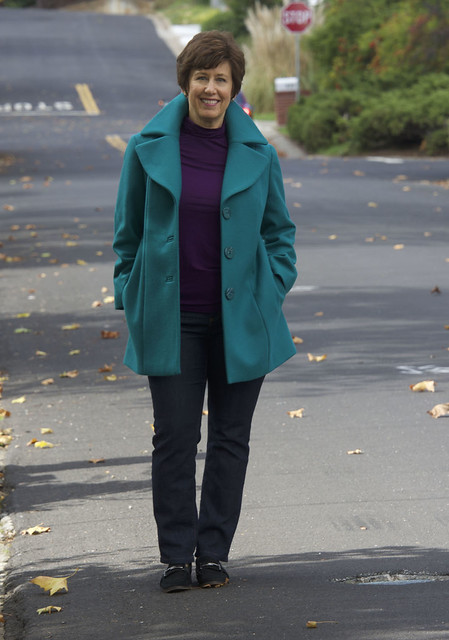
When I left off the previous post, the bound buttonholes were completed. As I have said in other posts, once I get bound buttonholes done with no mishaps I always feel that any project is downhill from there. Now let's talk interfacing. And if I had a sewing motto it would be "more interfacing". Most sewing patterns or books give general info on using interfacing but I pretty much use it on every part of the lapel, collars, facings, pockets, hem, sleeves and other spots that might need some support or stabilization.
Here's the collar, where I have determined the roll line and added extra interfacing to get it to roll over properly. To review, I am using Simplicity 2311 which is a really great coat pattern and one which I previously used to make a black full-length wool coat, first post for that coat here where you can see I figured out where the collar roll line was on the muslin. Now for my repeated refrain: why don't pattern companies include this as they used to? See older Vogue patterns - it was there.
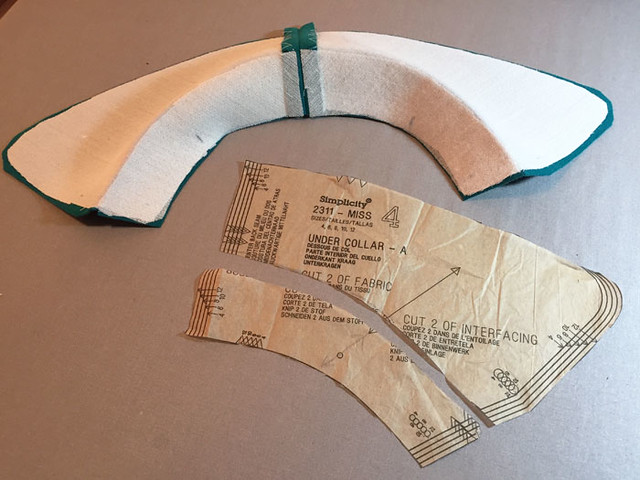
Using a double layer of interfacing to support the bottom part of the collar stands in for doing the hair canvas and pad stitching method. Then I pinned the under collar on my tailor's ham and steamed it in place, then left it to cool and dry with the crease.
Next up, stitching the undercollar to the jacket.
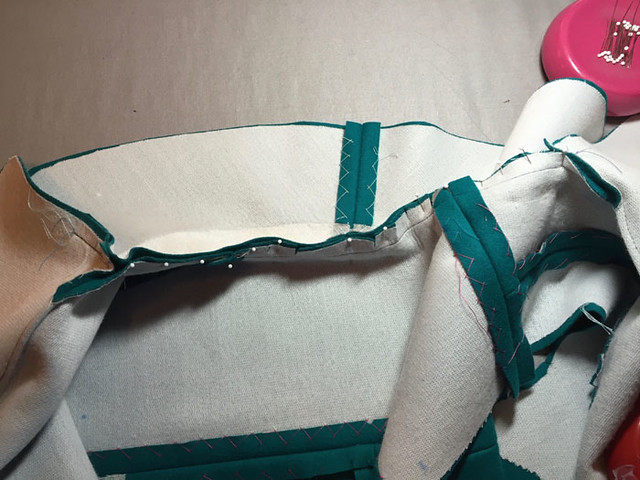
I do it in sections, stopping at the junction (typically the large dot) where the back neckline and lapel meet.
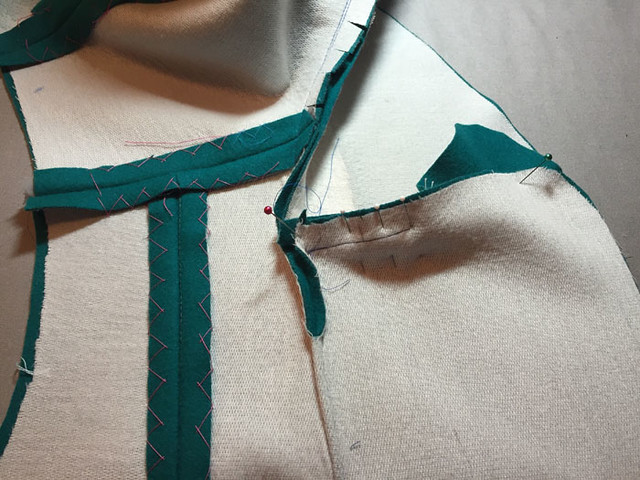
Note that most of the seams are catch-stitched down after pressing. To me that makes such a difference for the inside of the garment, and thus the outside, keeping the seam allowances from moving around and keeping everything flat on the outside.
Here is that seam before pressing. You can really see how the under collar will fold over nicely due to shaping the roll line.
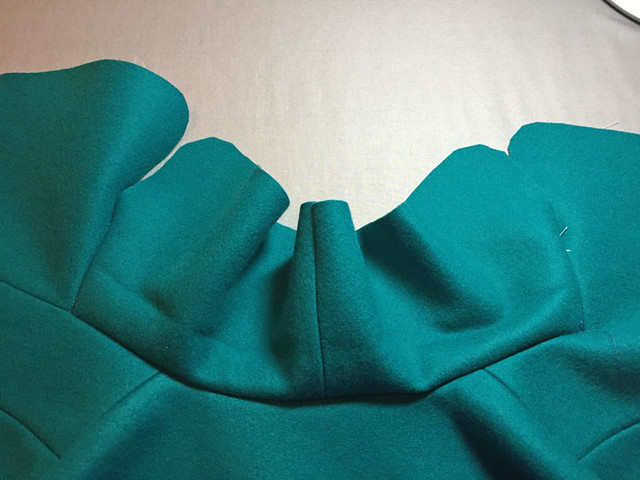
Next up, pressing and trimming that seam, and then catch-stitching it down as well. Using silk thread, and only stitching it to the interfacing so it is quite easy to do and a worthwhile step.
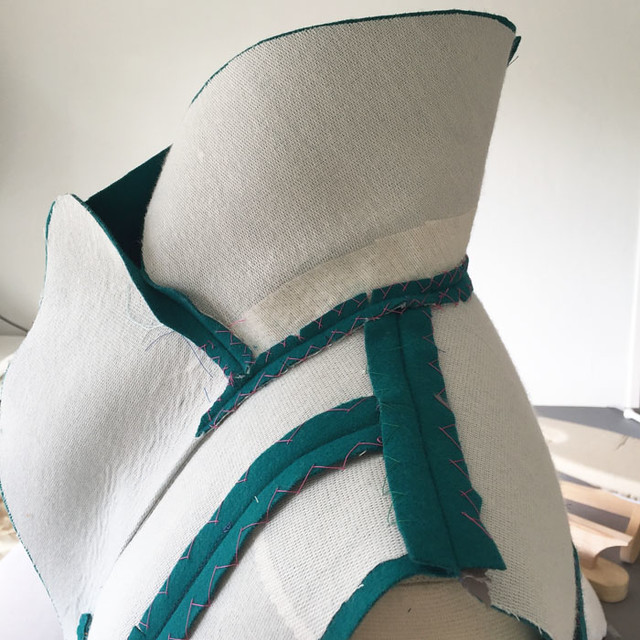
I like how this pattern has a dart that creates the inside lapel corner on the coat front. I have a Vogue jacket sewn a few times (used in my jacket series starting here) with that same dart feature. It gives a nice feminine shape to the jacket front without a side bust dart.
Now to one of my favorite parts - trimming. And so important! Anything with a scissors I find so enjoyable (cutting fabric, cutting my garden roses, cutting my hair - ok - that last one is much to the dismay of my stylist) Everyone has some little sewing task that they find gives them pleasure - I just like snipping and trimming.
Seam allowance grading - it takes some 3D visualization to review which side of the seam allowance will end up on top of the garment, and that one is always the larger by 1/8". Does this make sense? I might have a topic for a future post here...
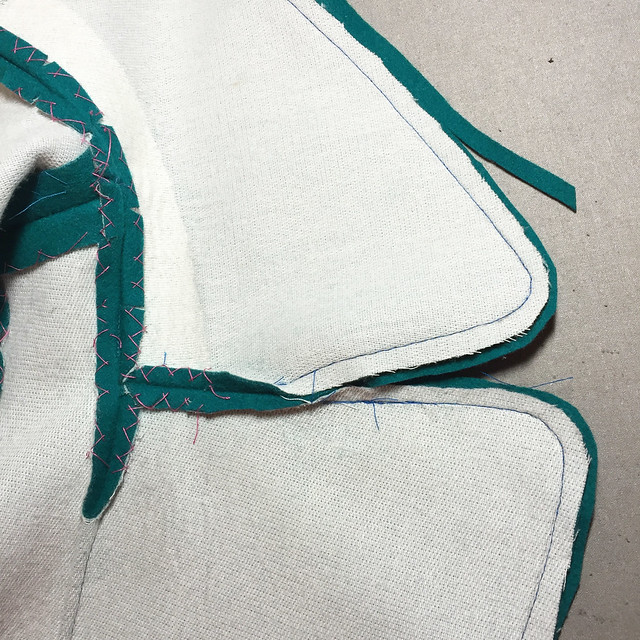
And then for the corner curves, on this think fabric it is entirely necessary to cut the triangle wedges out of the fabric so that when the corner is flipped they squeeze back together and don't leave any lumps or ripples. I think this takes a little bit of practice and ability to gauge how the fabric behaves. You don't want a saw-tooth effect showing through but you also want to remove the extra bulk.
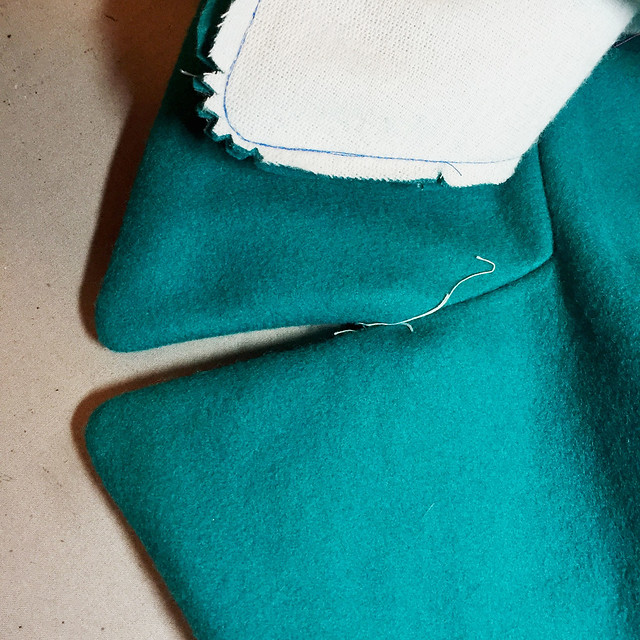
I took this picture to show one lapel all trimmed but as yet unpressed on the outside, juxtaposed with the trimmed inside lapel. I didn't take a picture of one crucial step which is to press the seam allowance open. However if you look at my jacket series (I will list links below) you can see what I mean.
That's it for construction photos on this project - here is the coat on the dress form. I'm not entirely sure about the length - maybe it could have been a bit shorter - more like a jacket but this will do, and I'm not changing it now.
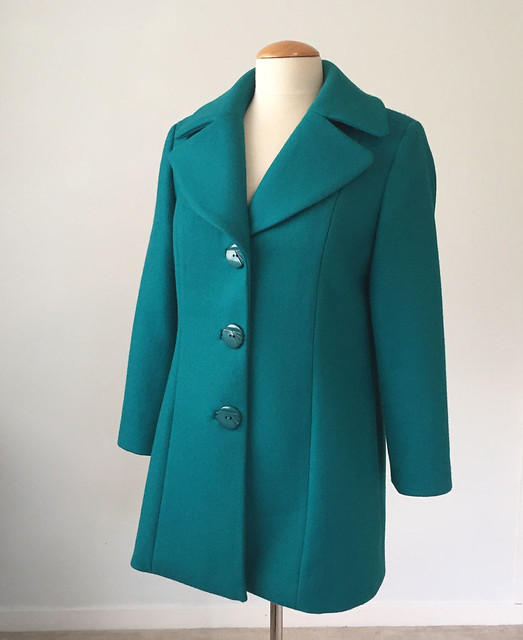
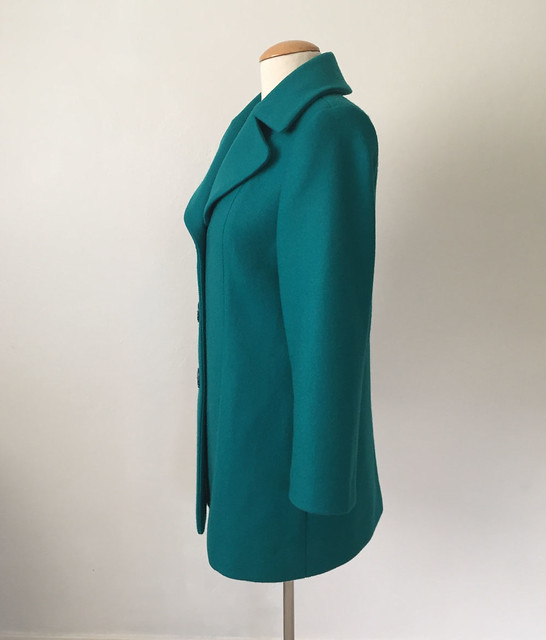
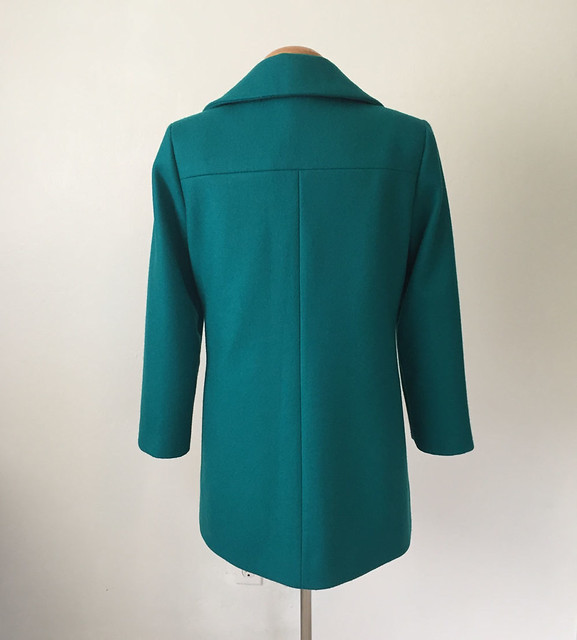
When I made the first version of this coat, in black wool I thought it was a bit boxy so I put long vertical waist darts in the back for shaping. They really don't show in that fabric. For this version I wanted a more boxy peacoat style so left them off.
Slightly cartoony facial expression here - but you can see the length and shape.
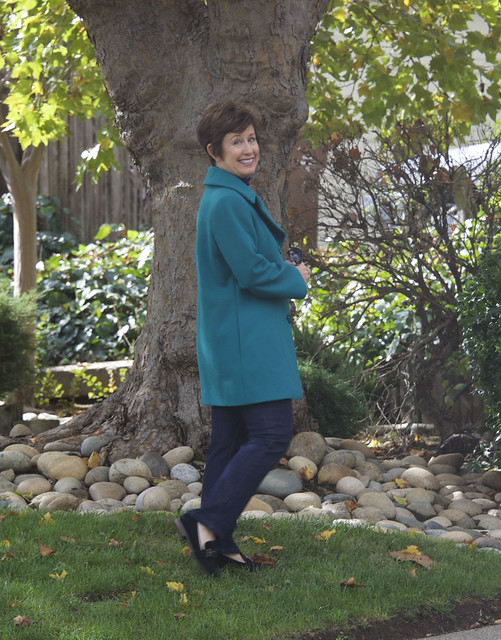
Oh yeah, another inside detail. I put deep patch pockets on either side of the front. I actually got out my wallet, sunglasses, cell phone etc and decided on how big I could make these while not distorting the front of the coat. Success! I stuffed so much in these pockets when I was in New York. Sunglasses, wristlet wallet, scarf, cash. Very handy and so great not to carry a big purse. I was kind of rushing to finish this coat before that trip, a little velcro or even a lightweight zipper at the top would make them even better.
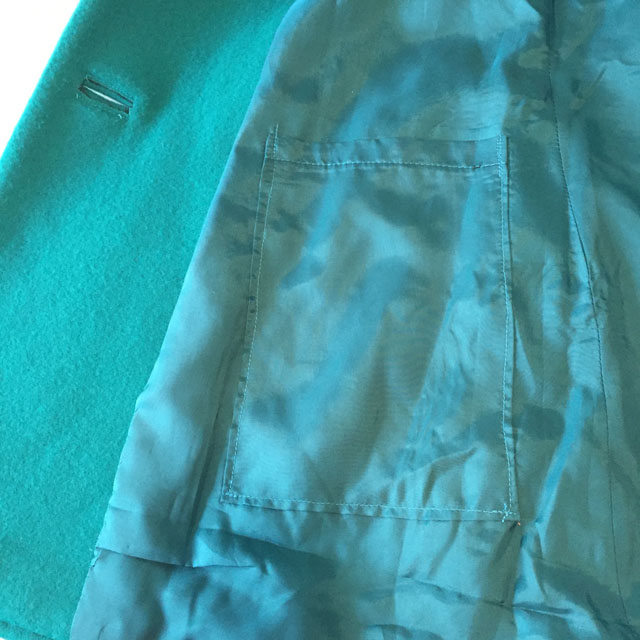
The front lawn is greening up after our super dry summer - this rain lately is so welcome although taking these photos the temp was near 70˚. Not exactly wool coat weather but at least the leaves are beginning to fall.
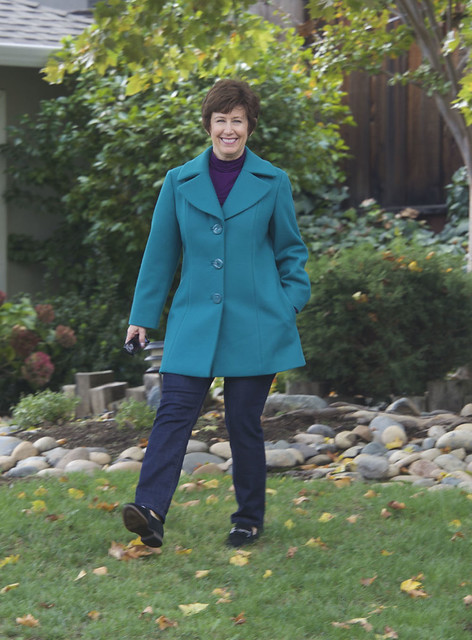
I am so happy with these buttons, could the color be any more perfect? I got them at Stone Mountain in Berkeley. Also bought the lining there too, ambiance rayon in the perfect shade. They have the best selection of lining in every color. Initially I was planning to put gold buttons - but I think these look just right.
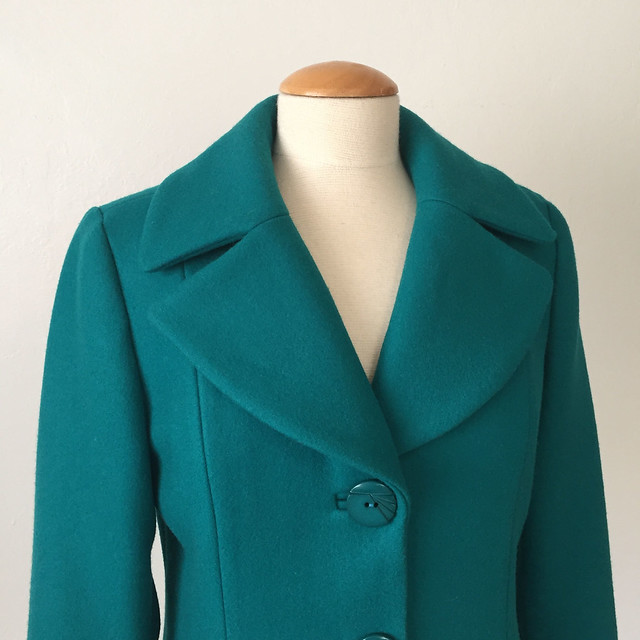
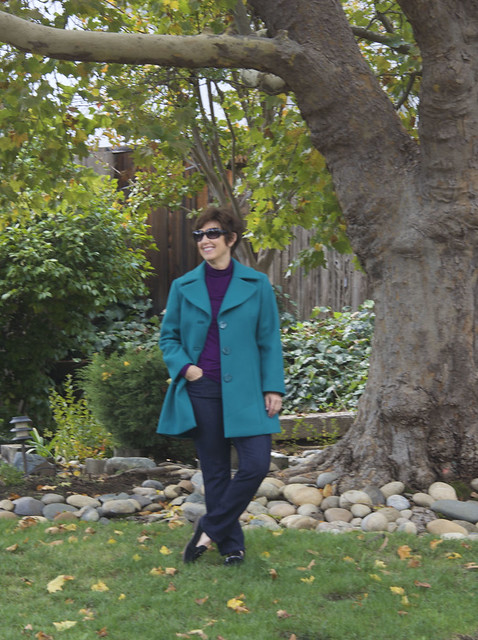
Not quite succeeding at the "so cool I have to wear shades" look. But ready for the weather to get chilly so I can wear this coat some more.
Here are a few links for things I mentioned in this post or might be of interest.
- Black wool coat using this pattern, Simplicity 2311
- Jacket tailoring in depth series, 7 posts in total, starting here with first post
- Further details on buttonholes and button sewing
- This post has some info on that front hem corner.
I highly recommend this Simplicity pattern (2311) which finally appears to be OOP, however there seem to be lots of copies available on eBay. It is an easy pattern to sew and the proportions are great for a warm winter coat.
That's it for coats for Fall 2016 - Winter 2017. So I say, ha ha. OK, no more coats - but jackets, yes. I just opened Vogue 1526 earlier today for a quick look. I might recreate the same version as is on the pattern envelope, since I bought a red wool at Metro Textiles in NY that would be perfect. It looks quick to sew, with no sleeves and in seam buttonholes. Like I said, we just need some wintery weather to wear these things.
In other projects, I am playing around with pattern adaption to make a tie neck blouse. I don't see the need to buy a pattern for that and I love manipulating shirt patterns to create different looks.
Also I have a Random Threads post in the works and feel a Pattern Whisperer post coming on.
Pondering a couple of different topics - party dresses are a perpetually popular category but what about party blouses? Meaning a blouse in a dressy fabric - something not for work but for wearing to a party or evening out - with pants (warmer and more comfy) plus quicker to sew. Chime in on your requests for the Pattern Whisperer category. The holidays are fast approaching and we need to get sewing for upcoming festivities.
It's supposed to rain here Monday evening which would be the first in a long time - Soggy trick or treaters plus a week night has me hoping it will all be wrapped up by 8pm or so. We can hope.
Happy Halloween,
Beth
today's garden photo, which I took some weeks ago when the hydrangeas were starting to turn dry and autumnal, but a few roses were still blooming.
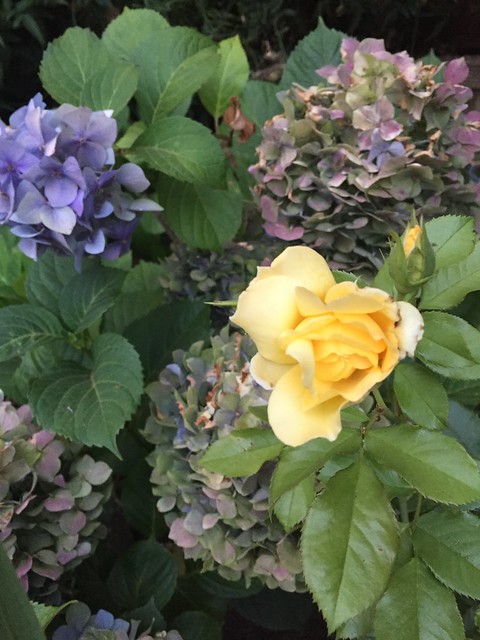



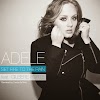
0 Yorumlar